Roof Mounted Solar Panels for SMEs: overcoming operational Hurdles
As businesses face increasing pressure to reduce costs while enhancing their sustainability efforts, small and medium-sized enterprises (SMEs) are exploring innovative solutions.
Roof mounted solar panel systems are becoming a strategic move for many SMEs looking to lower energy expenses, increase energy independence, and respond to growing environmental demands. However, with these benefits come operational challenges that need to be carefully considered and addressed.
This blog explores the key benefits, common obstacles, and practical solutions for integrating roof mounted solar panels, helping SMEs maximise efficiency, sustainability, and return on investment.
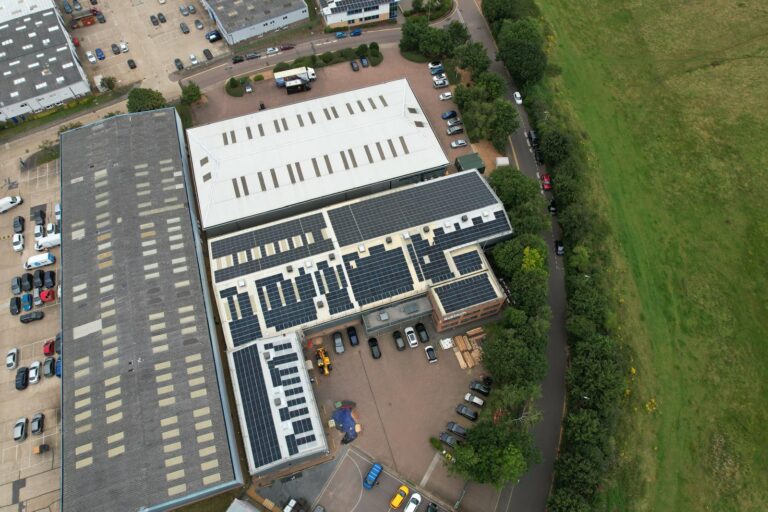
Why SMEs Should Invest in Roof Mounted Solar Panels
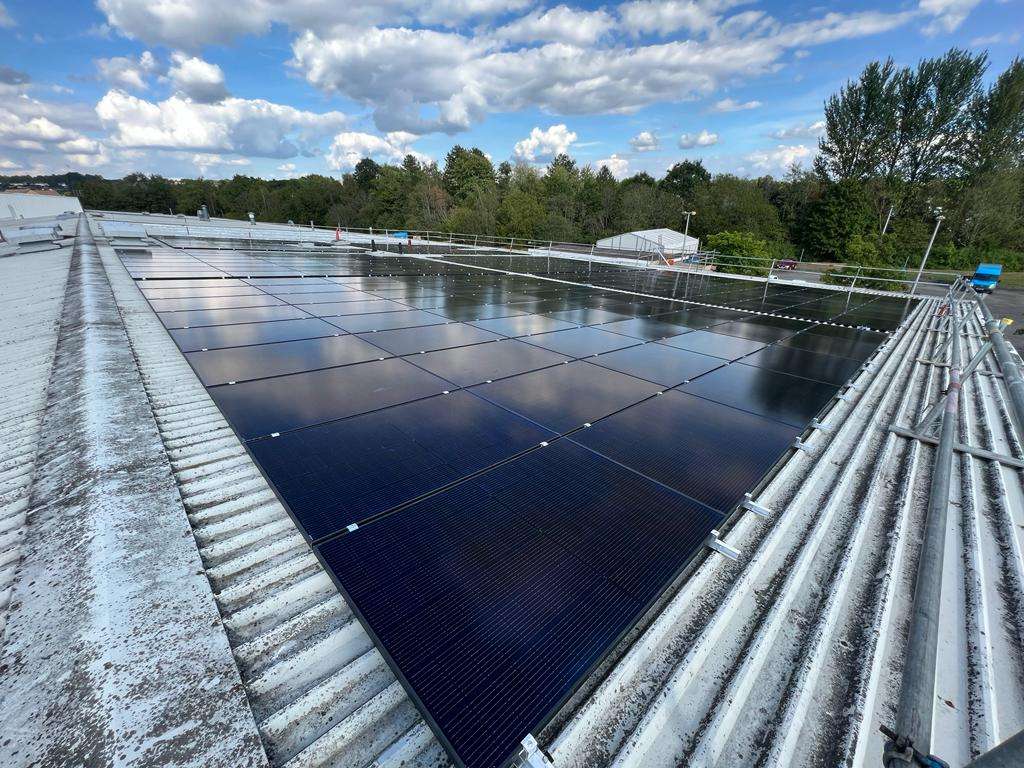
With rising energy costs and increasing pressure to reduce carbon footprints, many small and medium-sized enterprises (SMEs) are turning to roof mounted solar panel installations to achieve energy independence and financial resilience.
By harnessing clean, renewable energy, businesses can significantly lower operational expenses, improve long-term profitability, and future-proof themselves against volatile energy markets.
In addition to lowering energy costs and minimising your environmental footprint, investing in commercial solar panels can enhance your property’s overall value and strengthen customer loyalty. Furthermore, various grants and incentives are available to help offset the initial investment, making solar adoption more accessible and financially viable.
However, despite these advantages, SMEs often encounter challenges such as upfront costs, structural limitations, and regulatory hurdles when considering commercial rooftop solar solutions.
Relieve Sustainability Pressure with Rooftop solar power
In today’s business environment, sustainability has become a key factor influencing consumer behavior and investment decisions. The growing pressure from customers, regulators, and stakeholders for businesses to demonstrate environmental responsibility is forcing SMEs to adapt their operations. This often involves embracing new technologies and practices, including renewable energy solutions such as solar PV panels.
For many SMEs, transitioning to sustainable energy sources isn’t just a matter of financial savings, it’s becoming an essential component of their corporate strategy. A commitment to renewable energy not only enhances an SME’s brand reputation but can also improve customer loyalty and attract new business opportunities.
Investors and business partners are increasingly looking to align with organisations that prioritise environmental responsibility, making it crucial for SMEs to adopt rooftop solar power PV solutions in response to these demands.
Understanding Roof Types for Roof Mounted Solar Panels
If your roof faces south, east, or west and is free from obstructions, it is well-suited for a solar PV system. In contrast, north-facing roofs are generally unsuitable as they do not receive sufficient sunlight for efficient operation. Additionally, solar panels can be installed on the ground in some cases, and flat roofs may also be viable, provided they have the necessary structural integrity and remain free from obstructions.
Different roof types present varying installation challenges and require tailored solutions:
Pitched Roof Solar:
Come in various forms, including tilted and trapezoidal insulated panels, commonly found on smaller commercial buildings. These setups require specialised mounting brackets to securely attach PV panels while preserving the roof’s structural integrity. Since pitched roofs are typically at a right angle, additional angled mounting systems may be used where necessary to optimise solar exposure.
Flat Roof Solar:
Primarily utilise membrane-based solutions designed to optimise panel angles for maximum solar exposure. To enhance efficiency, ballasted racking or tilted mounting structures are commonly employed. These systems are typically secured using weighted ballasts, ensuring stability without the need for roof penetration.
Tiled Roof Solar:
Includes Slate, Rosemary, and Roman tiles, require specialised hooks to secure solar panel mounting. Proper installation is crucial to prevent damage to the underlying membrane, with carefully designed brackets ensuring panel stability while preserving the roof's structural integrity.
Metal Roof Solar:
Various industrial roofing types, including trapezoidal, corrugated, Euroclad, and Kingspan, are well-suited for direct solar panel mounting without roof penetration. This approach minimises installation costs while preserving roof integrity, making it an efficient solution for large-scale solar deployments.
Curved Roof Solar:
Commonly seen in commercial and industrial buildings, present unique challenges for solar installations. Maximising efficiency and ensuring structural safety demand precision engineering and specialised mounting solutions that adapt seamlessly to the roof’s curvature. Roof systems such as Kingspan and Euroclad are prime examples, where using manufacturer-recommended brackets is crucial to maintaining warranty compliance and long-term performance.
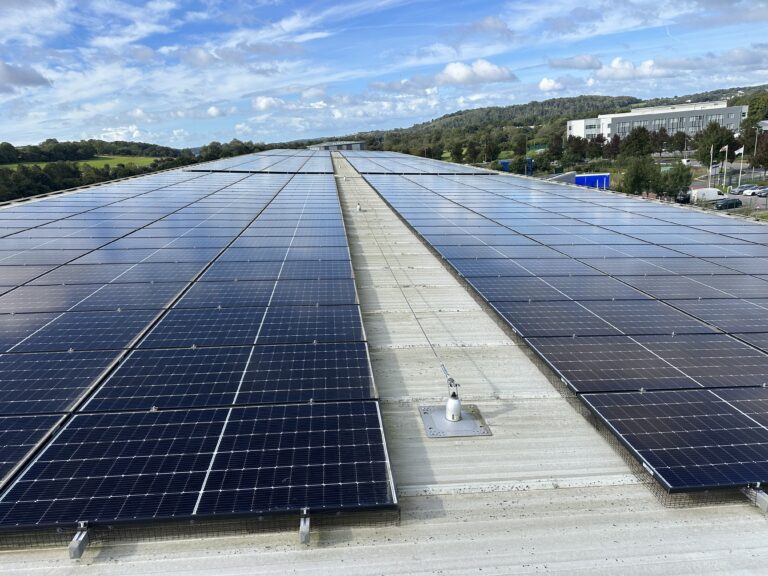
Key Challenges in Roof Top Solar Installation for SMEs
2. Structural Limitations & Roof Suitability
Not all commercial buildings are designed to support roof-mounted solar panel installation. Load-bearing capacity, shading issues, and available space affect feasibility.
Solution: Partnering with an experienced commercial solar provider ensures a properly designed and installed system. Conducting essential assessments, such as structural evaluations and roof condition checks, helps determine whether the roof can support the weight of a solar installation. Engineers can also recommend necessary repairs, reinforcements, or alternative mounting solutions to enhance efficiency and long-term performance.
1. Upfront Costs & Financial Constraints
While solar panels for business premises provide long-term savings, many SMEs struggle with initial investment costs.
Solution: SMEs can leverage grid-tied solar solutions from service providers offering flexible financing models like Power Purchase Agreements (PPAs) or Hire Purchase Agreements (HPAs). These options enable businesses to offset installation costs using savings from reduced electricity bills. Additionally, government incentives and tax benefits further enhance affordability, making solar adoption a cost-effective investment.
3. Grid Connection & Regulatory Hurdles
Navigating grid DNO connection requirements and obtaining necessary approvals can be complex for SMEs opting for a grid-tied solar system service.
Solution: Partnering with an experienced solar provider simplifies the process by ensuring adherence to Distribution Network Operator (DNO) regulations and expediting grid connection approvals. Additionally, a thorough assessment of onsite infrastructure is essential to determine the availability of resources and whether any upgrades are necessary to accommodate the system.
4. Weather and Maintenance Challenges
Exposure to harsh weather conditions can affect roof-mounted solar panels. Dirt accumulation and temperature fluctuations impact efficiency over time.
Solution: Routine maintenance, panel cleaning, and system monitoring optimise performance and longevity. Investing in high-quality panels with durable coatings enhances resilience.
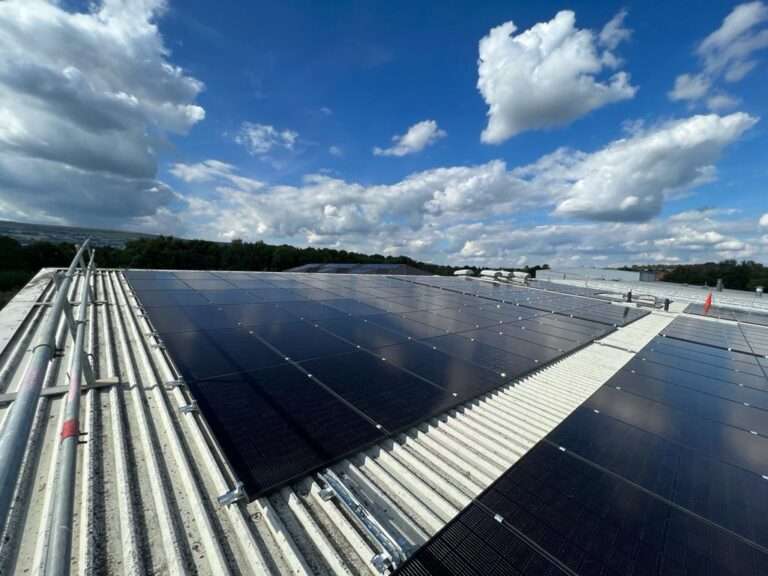
The Future of Energy Costs and Why SMEs Should Act Now
Rising energy prices continue to strain small and medium-sized enterprises (SMEs), making rooftop solar panels a strategic investment for cost control, sustainability, and long-term financial stability. With energy market volatility expected to persist, businesses must take proactive steps to secure stable and predictable energy costs through roof mounted solar panel installation.
Additionally, rooftop solar PV panel prices are projected to rise due to supply chain disruptions, increased material costs, and growing global demand. SMEs that invest early can avoid these cost escalations, securing more affordable solar solutions before prices increase further.
By acting now, businesses can lock in lower installation costs, improve energy efficiency, and future-proof their operations against an uncertain energy landscape.
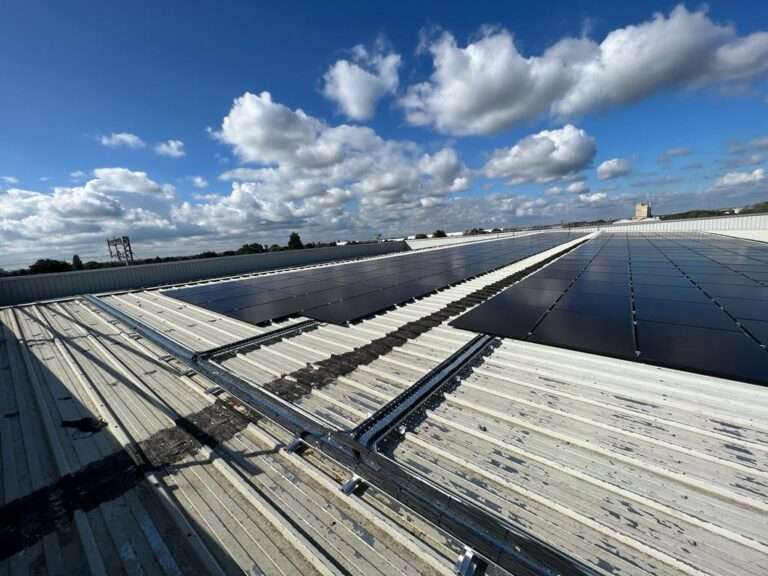
Take Advantage of Seasonal Benefits with Rooftop Solar Power
Installing rooftop solar power early enables SMEs to take advantage of seasonal sunlight variations, with increased energy generation during the spring and summer months. This results in higher electricity output, faster returns on investment, and greater overall savings.
By installing roof mounted solar panels in a well planned manor, businesses can maximise peak energy production periods, reducing reliance on the grid and lowering operational costs. Acting early not only enhances financial benefits but also accelerates sustainability goals, positioning SMEs for long-term energy resilience and environmental responsibility.
Conclusion: Future-Proofing SMEs with Rooftop Solar Power
SMEs can achieve significant cost savings and sustainability gains with rooftop solar panel installations. With expert planning, flexible financing, and professional support, businesses can lower energy expenses, strengthen energy security, and safeguard against future price hikes.
Now is the time to take control of your energy costs. Excel Energy offers customised grid-tied solar solutions designed to meet your business needs. Contact Excel Energy today to discover the best rooftop PV system for your premises and start reducing your operational expenses!
